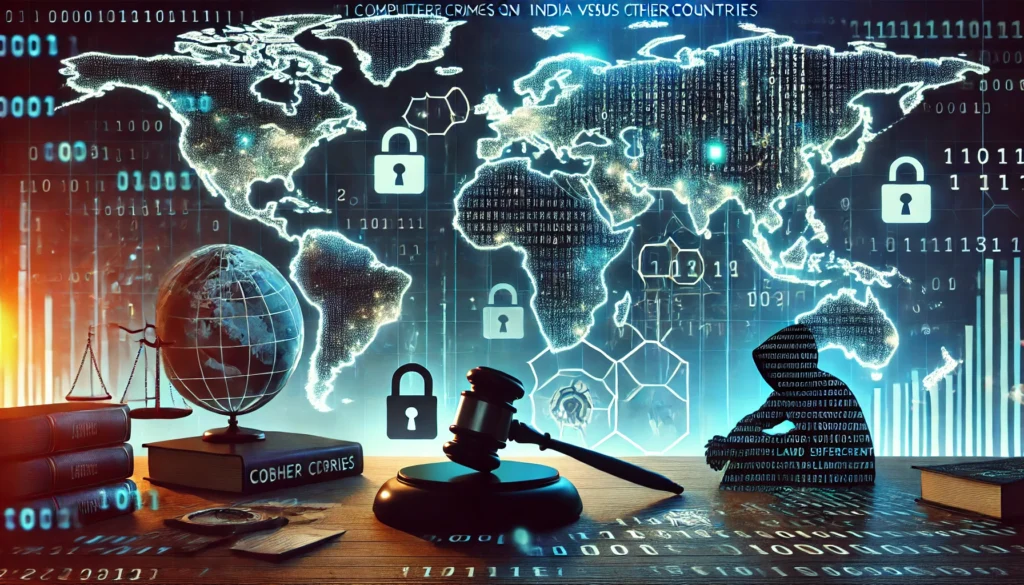Published on 13th August 2025
Authored By: Shreya Lakshmi Bhat K R
SDM Law College, Mangalore
Abstract
Cyberbullying is a rising threat in the digital era, with significant consequences for the mental, emotional, and social well-being of individuals, particularly women, children, and adolescents. Unlike traditional bullying, cyberbullying is persistent, anonymous, and far-reaching, often occurring on social media platforms, messaging apps, and online gaming platform. While India has several legal frameworks in place, including the Information Technology act and the Indian Penal Code, the absence of a comprehensive cyberbullying law has created notable enforcement gaps. This article explores the meaning, nature and forms of cyberbullying, followed by an in-depth analysis of legal remedies in India, relevant judicial interventions, international comparisons, and practical reforms to address the void and limitations in the current system in India.
Introduction
The evolution of the internet from a limited communication to universal medium for social and commercial interaction has brought immense benefits. However, it has also led to the rise of cyberbullying, a form of online harassment that can range from abusive messages and defamation to serious threats and non-consensual sharing of personal images.
The uniqueness of cyberbullying lies in its invisibility and inescapability. Victims often do not know their harassers, and the content can remain online indefinitely. According to the National Crime Records Bureau(NCRB), India reported around 63% increase in cybercrime cases in recent years, with a significant portion involving harassment, blackmailing, or threatening messages.
Cyberbullying refers to the act of using digital technologies such as social media, messaging apps, emails, or any other online platforms to harass, threaten, humiliate, or intimidate another person.
Cyberbullying can also be in the following forms:
- Repeatedly sending offensive, threatening, or abusive messages online.
- Constantly monitoring or following someone’s online activity in a way that causes fear or discomfort. This may include tracking location or blackmailing.
- Creating fake profiles or hacking someone’s account to post harmful content which can damage the victim’s reputation.
- Sharing someone’s private or sensitive information (such as photos, chats or address) online without consent. This is known as doxing.
Despite the harm caused, cyberbullying in India remains under-reported due to fear, social stigma and lack of awareness. In the absence of strict law, multiple legislations are often relied upon to address individual aspects of the offence.
Legal Remedied in India
India tackles cyberbullying through multiple legal approach, involving the Information Technology act, 2000; the Indian Penal Code, 1860; the POCSO Act, and the Juvenile Justice Act. Each of these laws covers specific facets of cyberbullying but lacks unified definitions or procedures.
- The Information Technology act, 2000 (IT Act)
As the principal law dealing with cybercrimes, the IT Act provides critical legal remedies. Key provisions include:
- Section 66C: Deals with identity theft using digital means, such as impersonating someone’s online profile.
- Section 66D: Penalises cheating by personation using computer resources, which is often used in impersonation cases.
- Section 66E: Punishes the violation of privacy by capturing or transmitting images of a person without their consent. This is frequently used in cases involving voyeurism or the sharing of private photos or videos.
- Section 67 and 67A: Deals with publishing or transmitting obscene or sexually explicit content in electronic form. This section is especially applicable in cases of revenge porn, a particularly harmful form of cyberbullying.
- Section 72: Penalises breach of confidentiality and privacy by someone who has secured access to data and misuses it.
However, enforcement of these provisions often becomes difficult due to delays in investigation, lack of digital forensic tools, and jurisdictional confusion when the offender resides in another state or country[1].
- Indian Penal Code, 1860 (IPC)
Although the IPC was enacted long before the internet age, many of its provisions remain relevant and regularly invoked in cyberbullying cases:
- Section 354A: Addresses sexual harassment, including unwelcome sexually coloured remarks or advances made online.
- Section 354D: Defines and penalises stalking, including cyberstalking, which involves following someone’s online activity obsessively or sending them repeated messages.
- Section 499 and 500: Related to defamation, including online defamation via blogs, posts, or messages that harms the victim’s reputation.
- Section 507: Punishes criminal intimidation through anonymous communication, often used in cases involving threatening messages.
- Section 509: penalises insulting the modesty of a woman through words, gestures or online actions.
The use of IPC sections in cyberbullying helps plug the gaps in the IT Act, especially where personal safety and reputation are at stake. However, critics argue that these laws are outdated and not always suitable for technology-driven crimes[2].
- Protection of Children from Sexual Offences (POCSO) Act, 2012
Children and teenagers are among the most vulnerable to cyberbullying. The POCSO ACT plays a crucial role in protecting minors from sexual harassment and abuse, both offline and online:
- Section 11 defines sexual harassment, including communication with sexual intent via digital means.
- Section 12 prescribes punishment for sexual harassment.
- The Act also criminalises child pornography, grooming and any form of sexual messaging or imagery shared with or about a minor.
Several cases have been registered under POCSO where children received sexually explicit content or were harassed via social media platforms. POCSO is strict liability law, meaning even the intention behind the act is irrelevant if the offence involves minor[3].
- Juvenile Justice (Care and Protection of Children) Act,2015
If the cyberbully is below 18 years of age, they are dealt with under Juvenile Justice Act. The Act mandates rehabilitative action rather than punitive action. This law is particularly significant when dealing with peer on peer bullying in schools and colleges.
- Section 10 and 14: Details of the procedure for handling juveniles in conflict with the law.
- Section 15: Allows the Juvenile Justice Board to decide whether a juvenile should be treated as a adult in heinous offences.
Schools are also bound under the CBSE and UGC guidelines to take appropriate steps against cyberbullying among students, failing which they may be held liable.
Judicial Responses
Indian courts have played a crucial role in interpreting and expanding the application of cyber laws to address online abuse.
- In Shreya Singhal v. Union of India (2015), the Supreme Court struck down Section 66A of the IT Act as unconstitutional, citing that it was vague and overly broad. However, this has led to a legal vacuum where harmless expressions and serious threats are not easily distinguishable, creating enforcement challenges[4].
- In S. Puttaswamy v. Union of India (2017), the Court affirmed that right to privacy as a fundamental right under Article 21. This has empowered victims of cyberbullying to challenge any form of non-consensual sharing of images of personal content.
- In Faheem Shirin R.K v. State of Kerala (2019), the Kerala High Court declared access to the internet as a basic right, but it also stressed that digital platforms must be responsibly used and institutions must take steps to prevent abuse.
- The Delhi High Court, in a 2020 case involving Instagram “Bois Locker Room”, directed immediate police investigation, emphasising the need for schools and parents to be vigilant. The case exposed the dangerous online behaviour among teenagers and the need for strict intervention.
These judgements collectively highlight how the judiciary is recognising the seriousness of cyberbullying, but they also underline the urgent need for legislative clarity and proactive law enforcement.[5]
International and National Comparisons
- United States
Many U.S. states have cyberbullying laws, particularly targeting student and adolescent behaviour. The Children’s Online Privacy Protection Act (COPPA) provides for the internet safety in schools and regulates the collection of data from children.
Some states like California and New York, have detailed anti-cyberbullying policies requiring schools to report and act on incidents. However, a federal law against cyberbullying is still lacking, making enforcement inconsistent.
- Australia
Australia is considered a pioneer in cyberbullying regulation. The eSafety commissioner is empowered to receive complaints, investigate, and direct platforms to take down offensive content.
The Online Safety Act, 2021, requires online platform to remove cyberbullying content within 24 hours of a complaint, failing to which penalties are imposed. There are also provisions for adult cyber abuse and image based abuse, making the law comprehensive.
- United Kingdom
The UK has the Communications Act, 2003, which criminalises the sending of grossly offensive messages. Also, there are certain laws which aims to make tech companies legally responsible for moderating harmful content, including cyberbullying.
Gaps in Indian Law Compared to Global Standards
- No single definition or legislation for cyberbullying in India.
- No Government body like Australia’s eSafety Commissioner.
- Limited platform accountability that is no law compelling platforms to remove content within a strict timeline.
- No public reporting tools or helplines managed by the state.
- Lack of victim centric mechanisms like mental health counselling, community outreach, or school based interventions.
These limitations restrict the efficiency if India’s response to cyberbullying, especially when compared to countries like Australia or the UK that have specialised, well-funded, and victim friendly mechanisms[6].
Challenges in Implementation
- Victim fear and stigma preventing reporting, especially among children and women.
- Police apathy or ignorance, delaying the investigation.
- Technical challenges in tracing IPs, preserving digital evidence, or identifying anonymous users.
- Lack of digital literacy in rural and semi urban areas.
- Platform resistance in complying with takedown requests due to policy loopholes or foreign jurisdiction.
These challenges often discourage victims from pursuing justice, resulting in impunity for offenders.
Suggested solutions and Way Forward
- Draft a Cyberbullying Specific Law: Define cyberbullying clearly and criminalise all forms with tiered penalties based on severity.
- Create a National Cyberbullying Helpline: One-stop portal for complaint filing, mental health support, and content takedown.
- Introduce Cyber Safety in Education: Mandatory modules in schools and colleges.
- Establish Fast Track Digital courts: For time bound redressal of online abuse cases.
- Improve Police Infrastructure: Cyber cells in every district, with proper staffing and digital tools.
- Hold Platforms accountable: Legally mandate content removal timelines and victim support mechanisms.
- Launch National Campaigns: To raise awareness and reduce stigma around reporting.
Conclusion
Cyberbullying is not a fleeting inconvenience, it is a modern form of violence that leaves lasting scars. India, while legally equipped in fragments, needs a comprehensive, dedicated and enforceable legal mechanism that brings together elements of criminal law, procedural clarity and digital governance.
The need is not just to punish the perpetrator but to empower the victim, educate the society and ensure platforms take responsibility. As we march deeper into the digital age, our laws must evolve not just to defend rights, but to create a safe and just internet for all.
Let the internet not be a place where silence prevails, but a place where the laws speaks louder than hate.
References
[1] Information Technology Act, 2000, Sections 66C, 66D, 66E and 67.
[2] Indian Penal Code,1860, Sections 354A, 354d, 507 and 509.
[3] POCSO Act,2012, sections 11 and 12.
[4] Shreya Singhal v. Union of India, (2015) 5 SCC 1.
[5] K.S. Puttaswamy v. Union of India, (2017) 10 SCC 1, Faheem Shirin R.K. v. State of Kerala, 2019 SCC Online Ker 1738
[6] eSafety Commissioner, government of Australia, https://www.esafety.gov.au.




